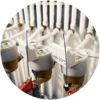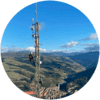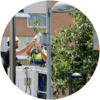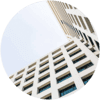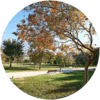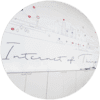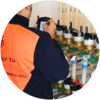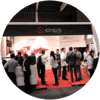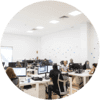Have you ever wondered about the status of patents related to IoT? who are the main owners and what has been its increase in recent years? In this week’s article we bring an analysis done by one of our engineers that will help you understand the global state of IoT technology patents and know about the current technological framework.
The Internet of Things refers to everyday objects that can be connected to the Internet, giving rise to the concept of distributed and ubiquitous computing. IT is integrated into the person’s environment so that computers are not perceived as differentiated objects. It is expected that by 2020 there will be 50 trillion devices connected.
The variety of services for the internet of things, based on the amount of data extracted from a large number of sensors, is only possible if the connectivity of things is assured. The absence of communications through heterogeneous IoT networks and the incompatibility of multi-layer system components are considered a technological bottleneck that impede IoT’s evolution. To solve this, activities and efforts for standardization are required, followed by changes in the architectural knowledge of the known computer systems that can have a great impact on the competitive framework of the current IoT world.
 HARDWARE
HARDWARE
It is the lowest layer of the IoT. These devices are responsible for generating the data from the sensors to obtain the information about what happens in the physical world. There is not a standard hardware, and there is a tendency to make specific embedded designs with the goal of scalability in mind. One of the biggest challenges is to make this type of hardware autonomous and have the minimum consumption so that it can be operated by batteries.
 COMMUNICATION
COMMUNICATION
It is the most important part of the IoT and it is here where the Power of the progress of communication technologies related to IoT lies. To do this, different existing technologies and others specifically developed for the IoT are used. These technologies can be wired as any IP protocol that works over Ethernet or can be Wireless, such as Lora and Sigfox. Apart from that, there can also be shorter range networks such as Zigbee, Z-Wave or even standard protocols such as WmBus. Most of these Wireless technologies work with free frequency bans under the ETSI regulations.
 CLOUD COMPUTING
CLOUD COMPUTING
This layer includes all the elements that are necessary for the reception and adaptation of the data generated by the devices and received through the networks. They include Hardware technologies, devices classification (gateways, servers, gateways, media converters …), protocols (MQTT, AMQP, HTTP, FTP …), operating systems (Windows, CentOs, Ubuntu, RedHat …) and databases (MySQL, MariaDB, MongoDB…). It is in this layer that the gross power of the IoT is concentrated. Additionally, this layer must have an architecture and foundations that allow scalability, along with the large number of devices that are expected to reach in the coming years.
 APPLICATION AREAS
APPLICATION AREAS
The different applications can go from home or energy to mobility through lifestyle and reaching the manufacturing industry.
 PATENTS
PATENTS
The search and analysis in different web portals has allowed the analysis of the results and to obtain the following patent framework:
The main patent holders come from different sectors such as consumer electronics, telecommunications or software. Qualcomm is the leading company in multiple jurisdictions as well as in applications for the Patent Cooperation, which suggests intentions to license its technologies worldwide.
The layer of transmissions is the one that more applications of patents holds with 62% of all related patents. Samsung is a holder of key patents in most IoT layers where its patents reach most areas of application. Patent applications have been increased since 2011 starting with technologies related to the transmission layer and reaching the rest from 2012. The number of patent applications of the last 10 years amounts to a total of 129,710 divided as follows:

Chart 1: IoT patents
Many of these patents cover different technologies, being those related to networks the ones with the most number of patents:
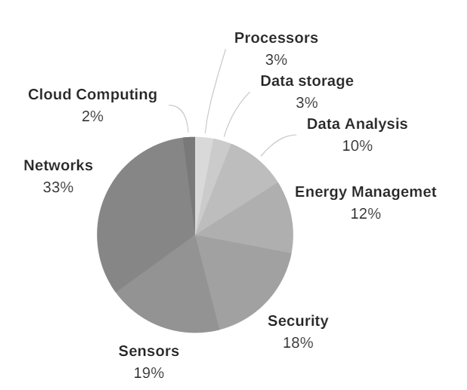
Illustration 1. Patents Distribution
As the Illustration 2 shows, Samsung has a large part of these patents:
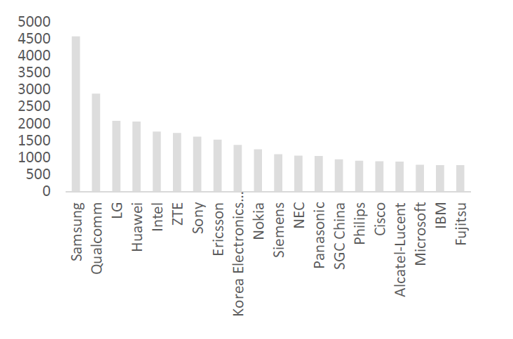
Illustration 2: Patent holders
 TRANSACTIONS
TRANSACTIONS
Furthermore, one of the key indicators of the patent framework in the IoT is the number of transactions. These transactions have been increased since 2011, where companies such as Avago or Google, who bought a large number of Motorola Mobility patents KLJ Consulting, Nest Labs and IBM have made an important collection of patents with the aim to be active in the new technological framework of the IoT in the future.
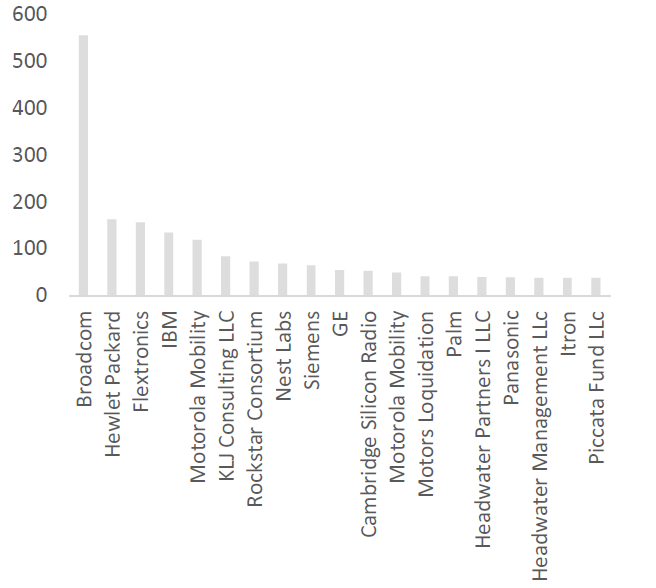
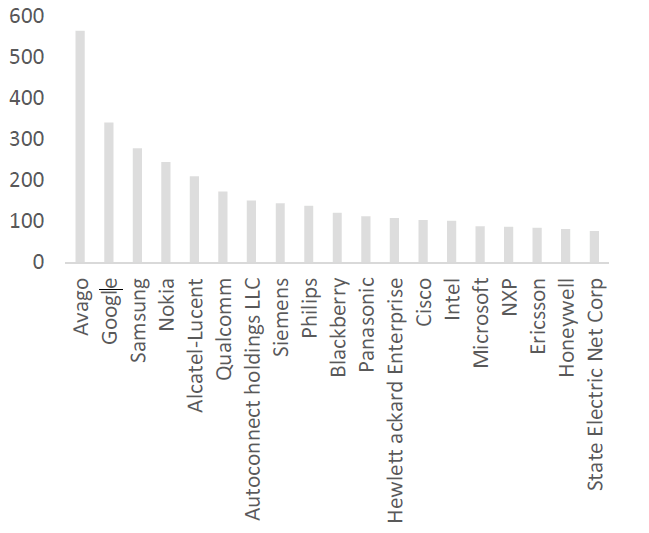
Illustration 3: Buyers Illustration 4: Sellers
Internet of Things is generating a significative change in the relationships that companies will have in the future, comparable to what was there when the use of the internet was extended globally.
The movement of publications and patent transactions has been clearly increased in recent years due to the possible valorization of the business. According to IDC “International Data Corporation“ these increases can have a market growth from 656 trillions in 2014 to 1.7 trillions in 2020.
You can see a clear attempt by companies related to the IoT to take advantage of positions before the proliferation of devices ends up exploding in the future.
